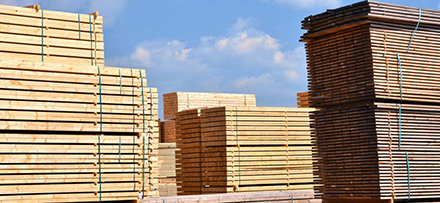IndexBox has published a report: ‘World – Sawnwood – Market Analysis, Forecast, Size, Trends and Insights’. This is a summary of the report’s key findings. Source: IndexBox, Global Trade
American lumber prices have decreased threefold, closing in on pre-COVID levels, which should drive global prices down. The change in lumber prices is largely influenced by slumping demand for real estate which became more expensive from diminished access. In Russia, the world’s largest supplier, a sharp increase in lumber exports led to a shortage in the domestic market.
Attempting to hold the price growth instigated by that, the Russian government implemented 10% export duties on lumber until the end of 2021. Due to this, the main importers of Russian goods may opt for other suppliers.
Key Trends and Insights
Lumber prices in the US are plummeting and nearing pre-COVID figures while pulling global prices down with them. After reaching a peak above US$1600 per board foot in May 2021, lumber futures on the Chicago Mercantile Exchange in August dropped below US$500 per board foot.
The main reason for the decrease in prices is the slumping demand for timber-based materials in the construction sector. According to the US Census Bureau, in June, new home sales dropped by 6.6% in the US compared with May and consisted of 676k units.
The average selling price for new homes increased from US$418.6k in January to US$437k in April where it peaked. In May the average selling price for new homes began to fall and in June was US$428.7k. An increase in the interest rate in the US and a decrease in mortgage credit availability along with growing costs of new housing have hampered the demand for real estate. Besides this, as tourism recovers, people are beginning to spend more on vacations rather than renovations and purchasing real estate.
While prices are starting to trend downward in the US, other countries are still acutely feeling the effects of the sharp increase in global prices for lumber.
In Russia, the world’s largest exporter, lumber prices on the domestic market skyrocketed in the second quarter of this year and reached their highest value in June. This increase was caused by a shortage of lumber within the country due to rapid growth in exports, particularly to China. Based on figures from Russia’s Federal Customs Service, IndexBox calculates that from January through May 2021, exports of rough sawnwood from Russia grew from 963k tonnes to 2.2M tonnes. Within that period, shipments to China only grew from 569k tonnes to 1.3M tonnes.
To hold back prices on the domestic market, the Russian government implemented 10% export duties on sawn softwood and raw hardwood from July through December 2021. This could cause exports from the country to drop. Russia makes up 52% of lumber imports to China and approximately 21% of shipments to Egypt. As a result of the new regulations, alternative suppliers may strengthen their position in Russia’s key foreign markets.
Global Sawnwood Production by Country
In 2020, approx. 503M cubic meters of sawnwood were produced worldwide; with an increase of +2.3% compared with 2019 figures. In value terms, sawnwood production reached US$187B in 2020 estimated in export prices. The total output value increased at an average annual rate of +5.0% from 2012 to 2020.
The countries with the highest volumes of sawnwood production in 2020 were China (99M cubic meters), the US (82M cubic meters) and Russia (46M cubic meters), with a combined 45% share of global production. In 2020, the biggest increases were in China, while sawnwood production for the other global leaders experienced more modest paces of growth.
Global Sawnwood Exports by Country
In 2020, global exports of sawnwood were estimated at 177M cubic meters, stabilizing at 2019 figures. In value terms, sawnwood exports reduced modestly to US$37.4B (IndexBox estimates) in 2020.
In 2020, Russia (35M cubic meters) and Canada (31M cubic meters) were the largest exporters of sawnwood in the world, together constituting 38% of total exports. Sweden (16M cubic meters) took the next position in the ranking, followed by Germany (12M cubic meters) and Finland (8.7M cubic meters). All these countries together held approx. 21% share of total exports. The following exporters – Austria (7.4M cubic meters), the US (6.5M cubic meters), Belarus (5.8M cubic meters), Latvia (4.5M cubic meters), Thailand (4.2M cubic meters), Ukraine (4.2M cubic meters), Brazil (3.6M cubic meters) and Chile (3.3M cubic meters) – together made up 22% of total exports.
In value terms, the largest sawnwood supplying countries worldwide were Canada (US$7.8B), Russia (US$4.8B) and Sweden (US$3.4B), together accounting for 43% of global exports. The US, Germany, Finland, Austria, Thailand, Latvia, Brazil, Chile, Ukraine and Belarus lagged somewhat behind, together comprising a further 34%.
The average sawnwood export price stood at US$211 per cubic meter in 2020, reducing by -1.9% against the previous year. Prices varied noticeably by the country of origin; the country with the highest price was the US (US$396 per cubic meter), while Belarus (US$102 per cubic meter) was amongst the lowest. In 2020, the most notable rate of growth in terms of prices was attained by the US, while the other global leaders experienced more modest paces of growth.






